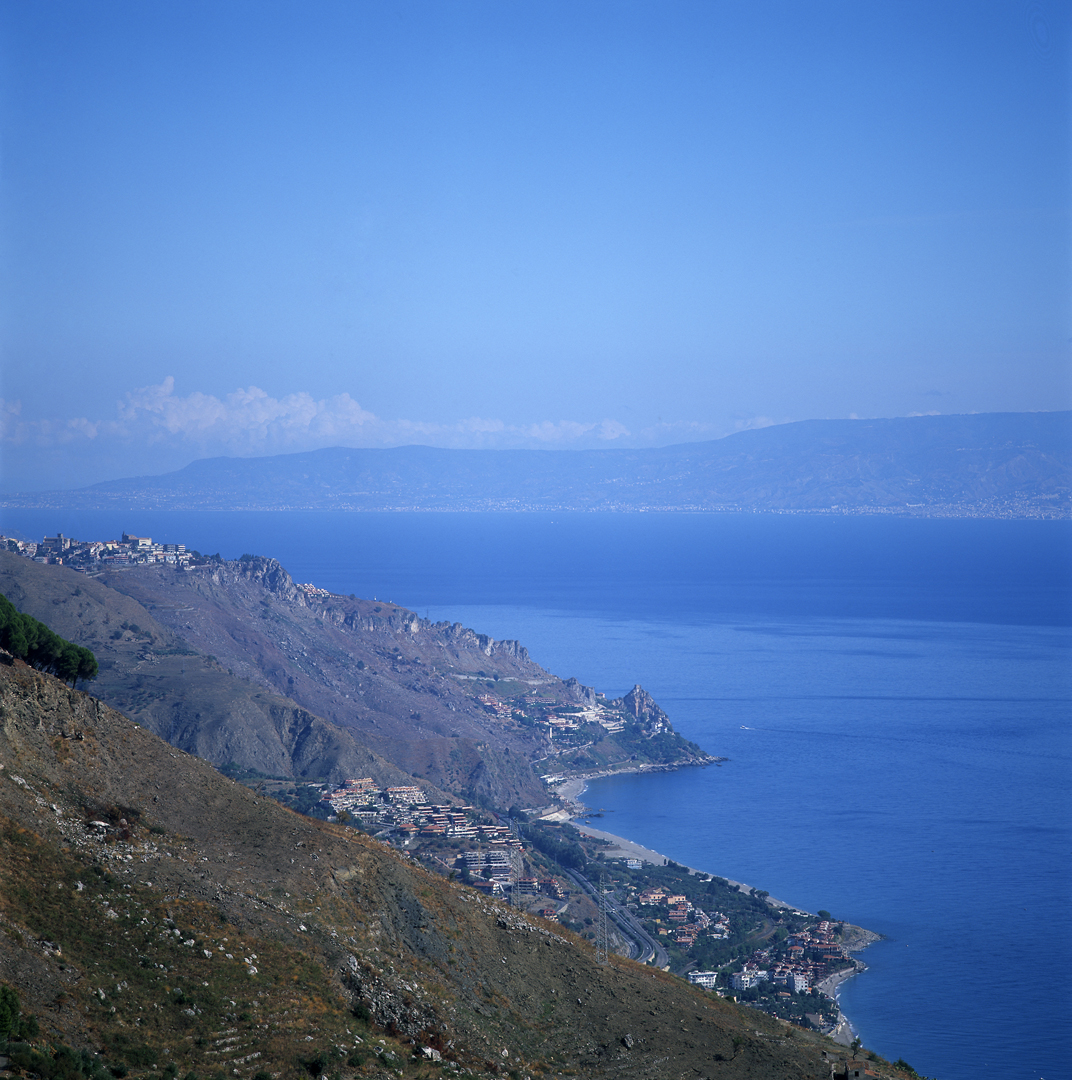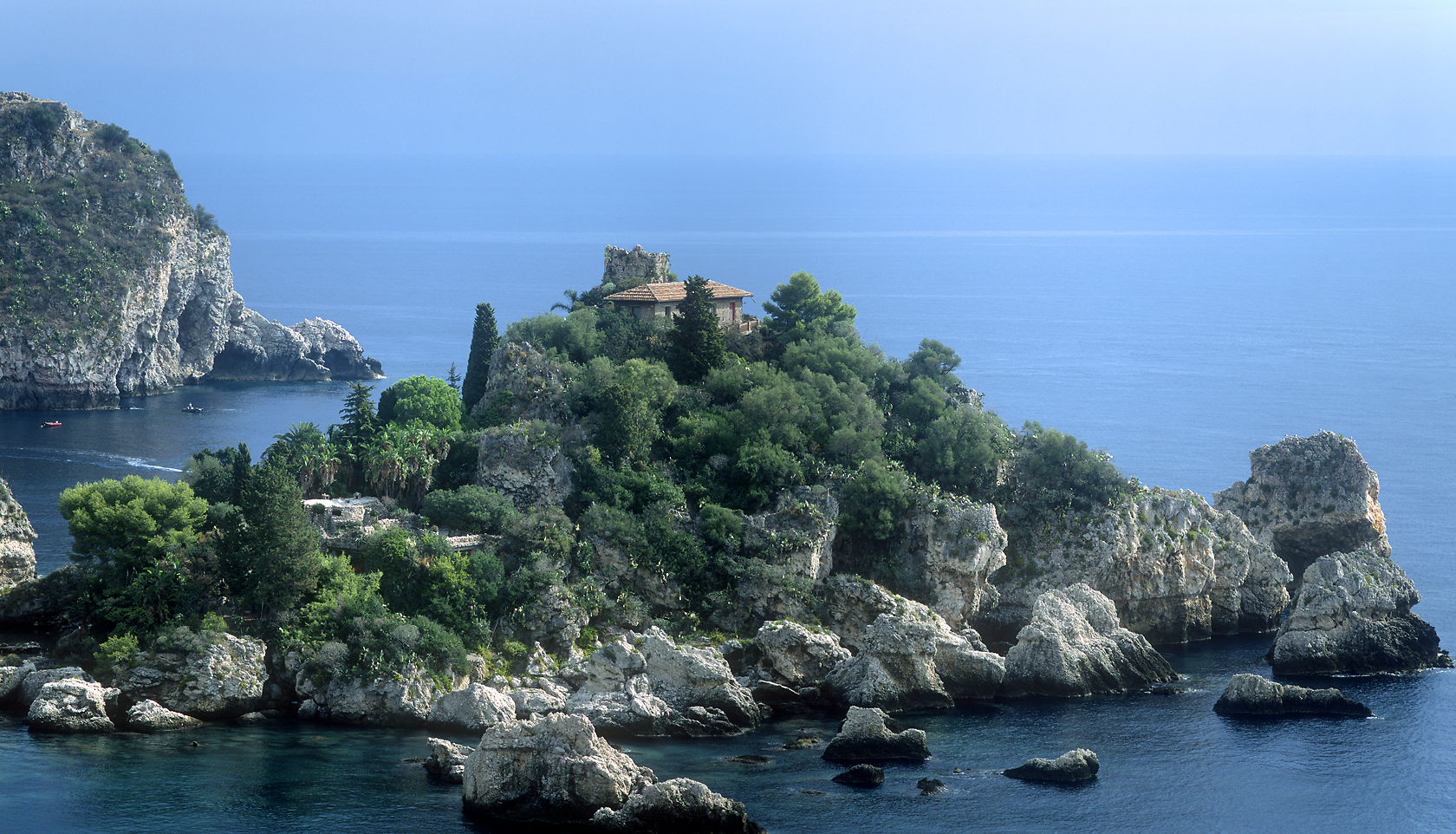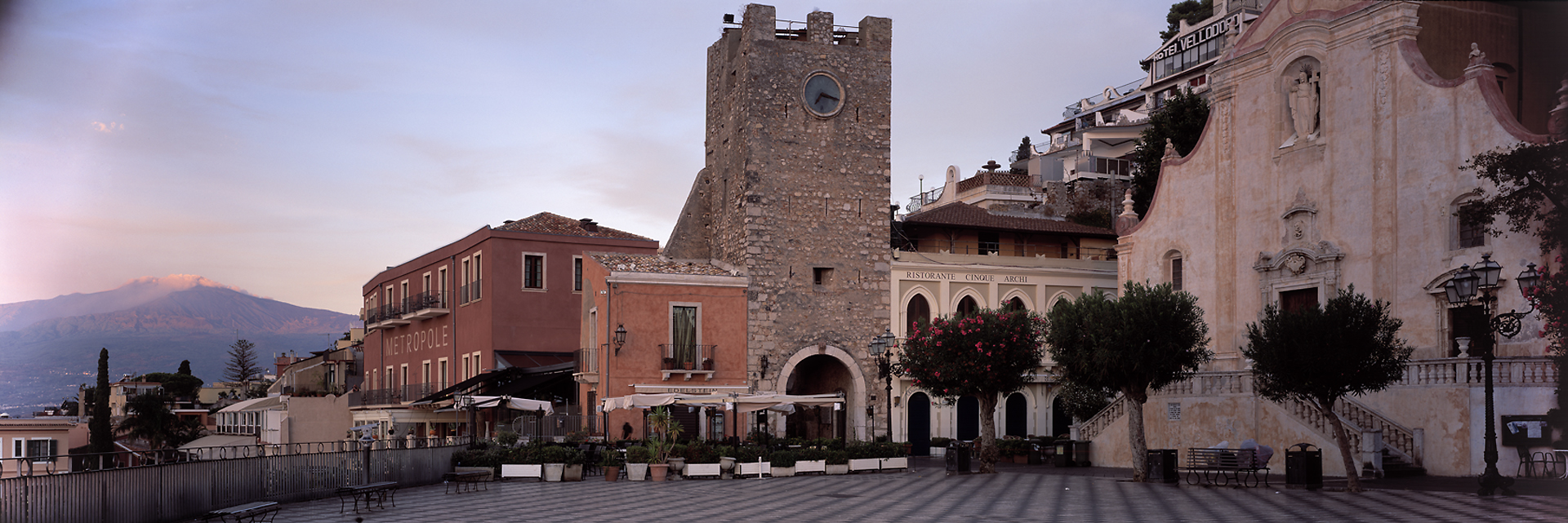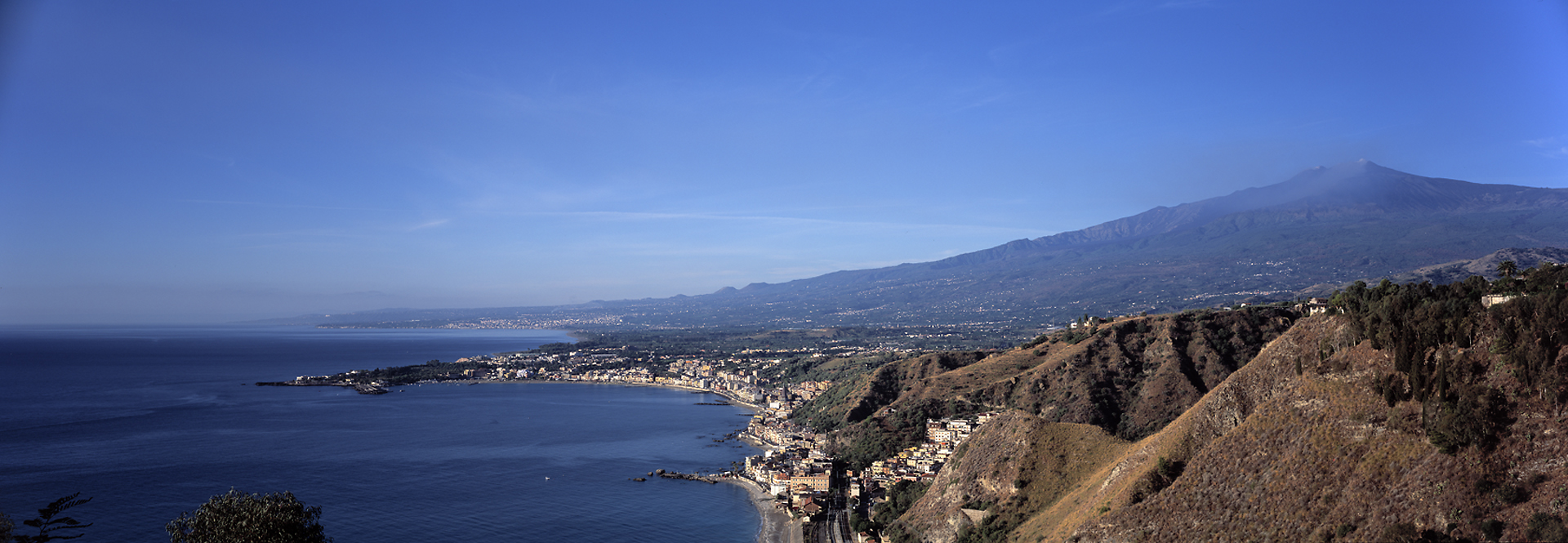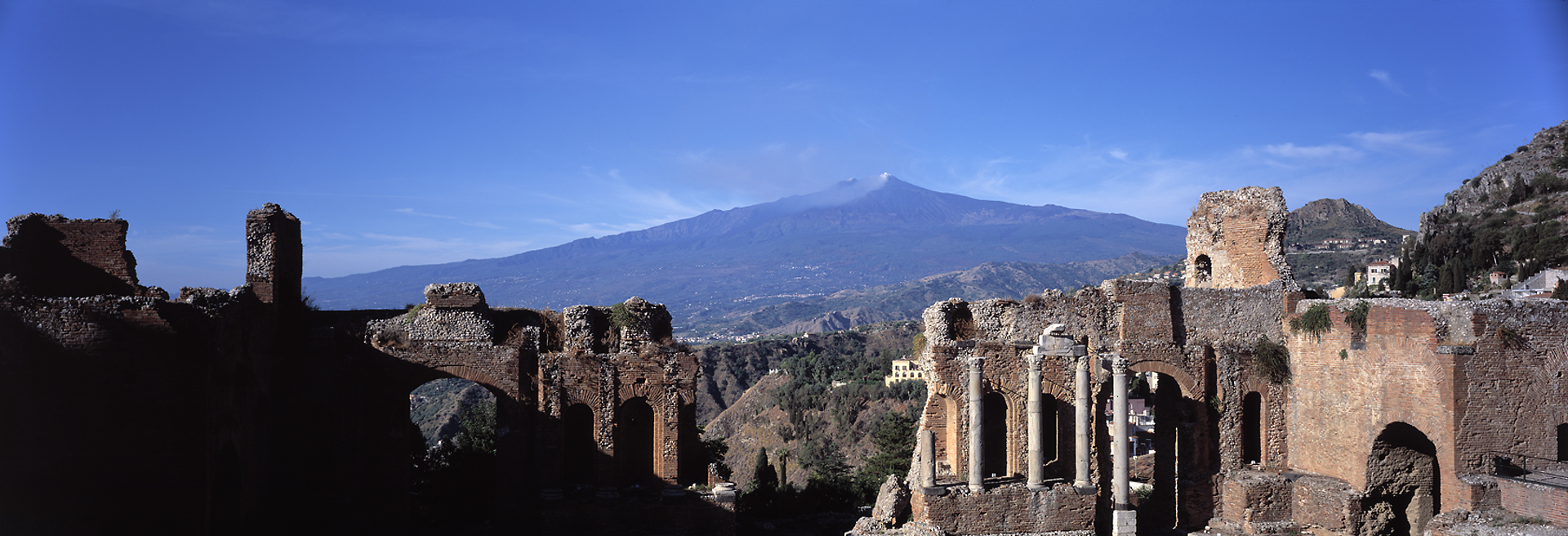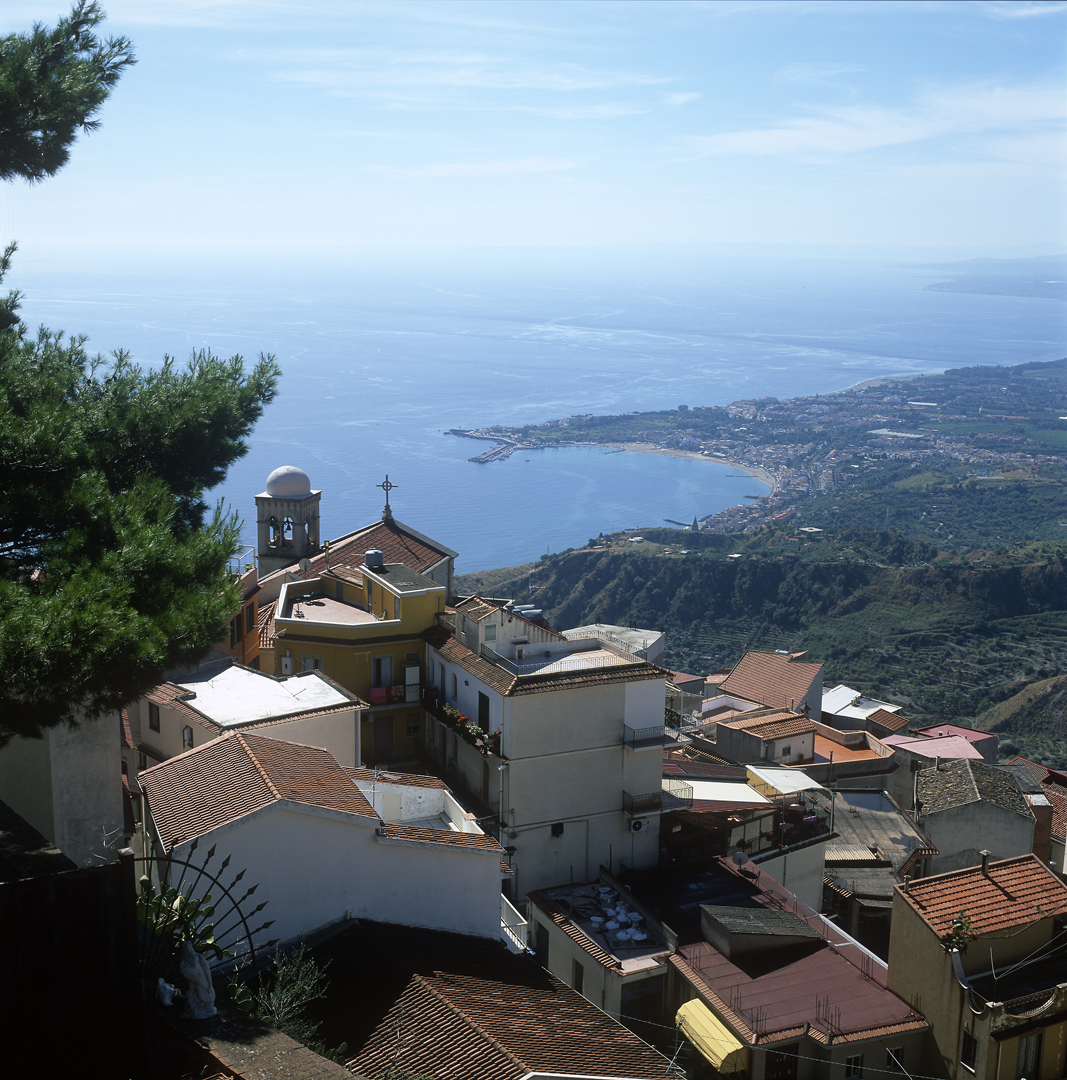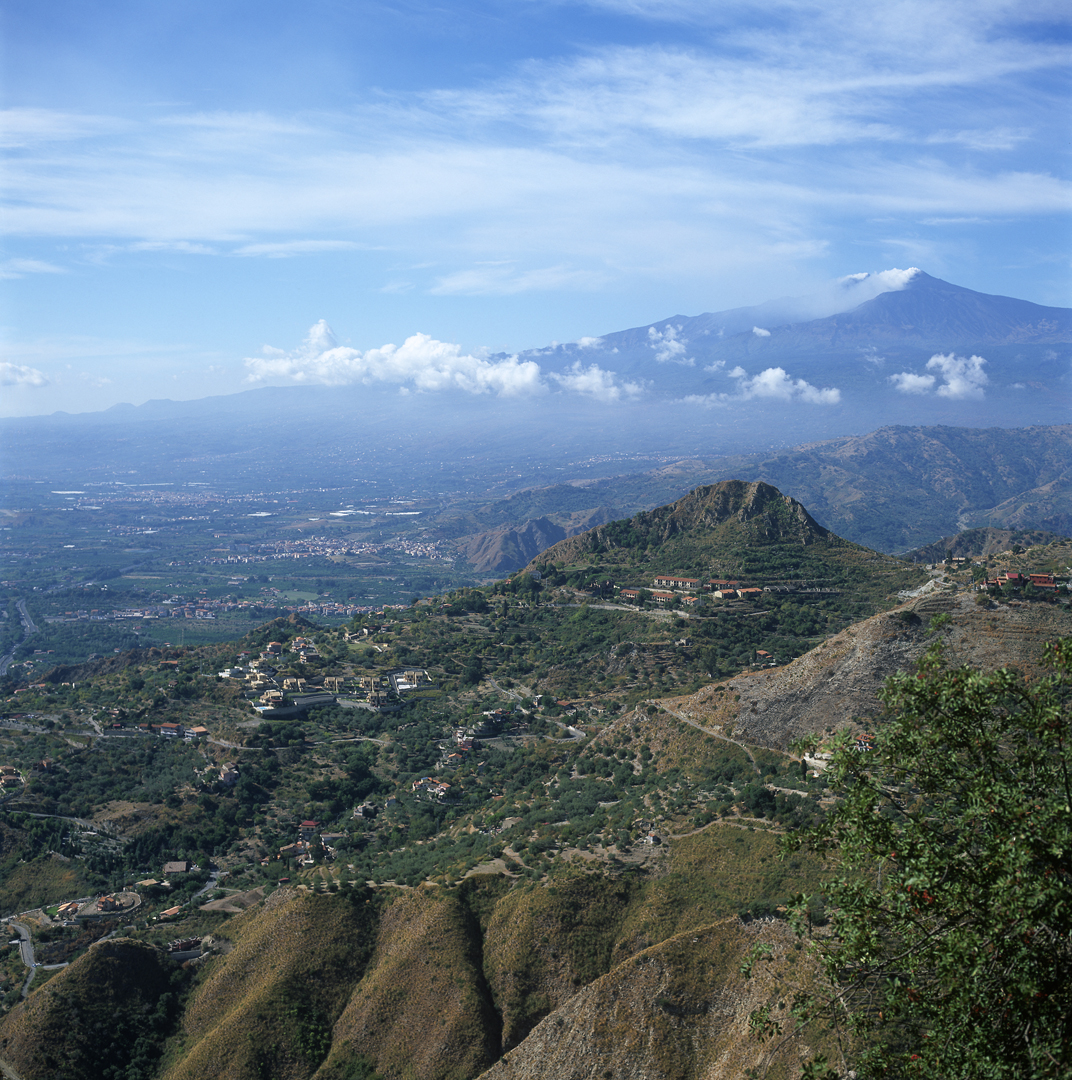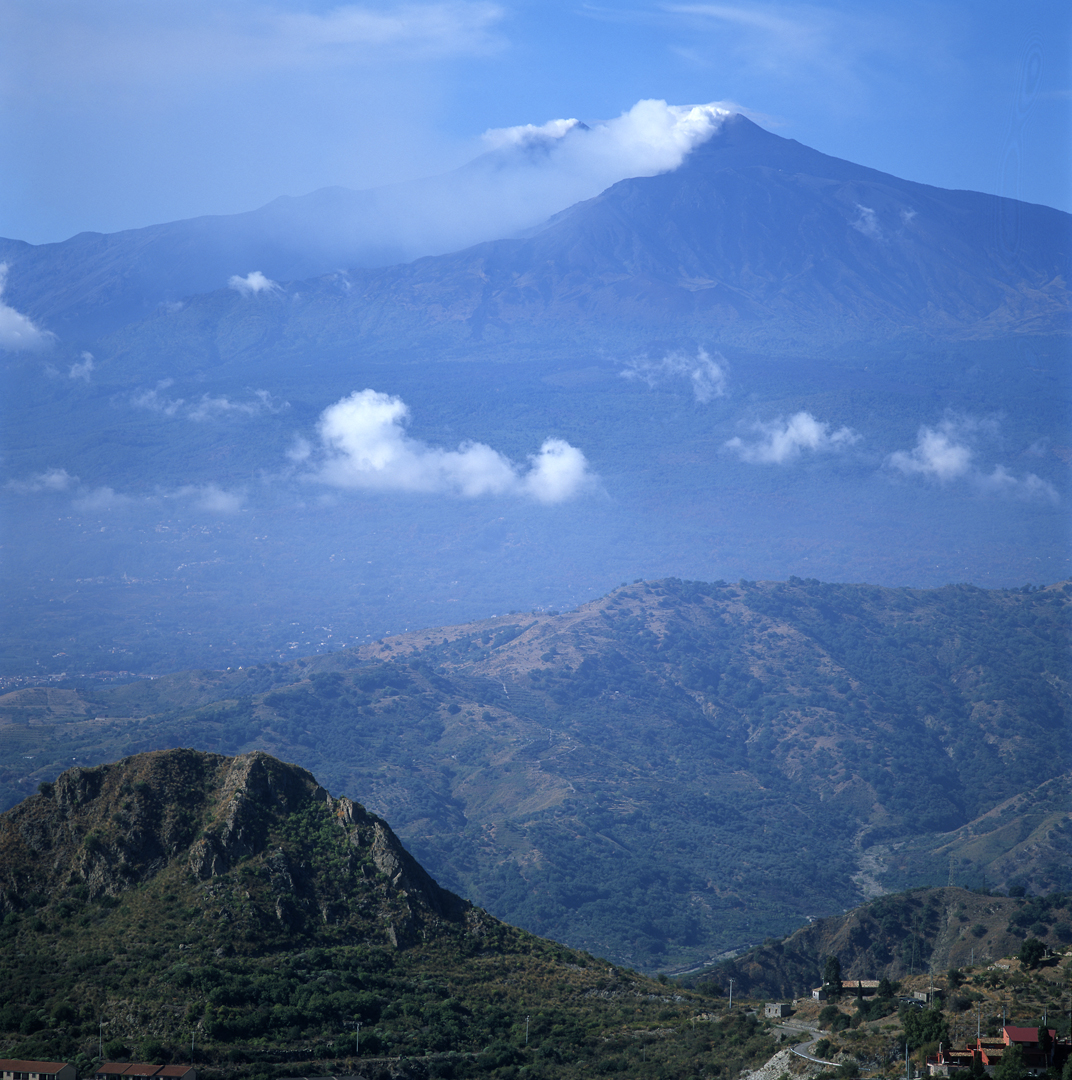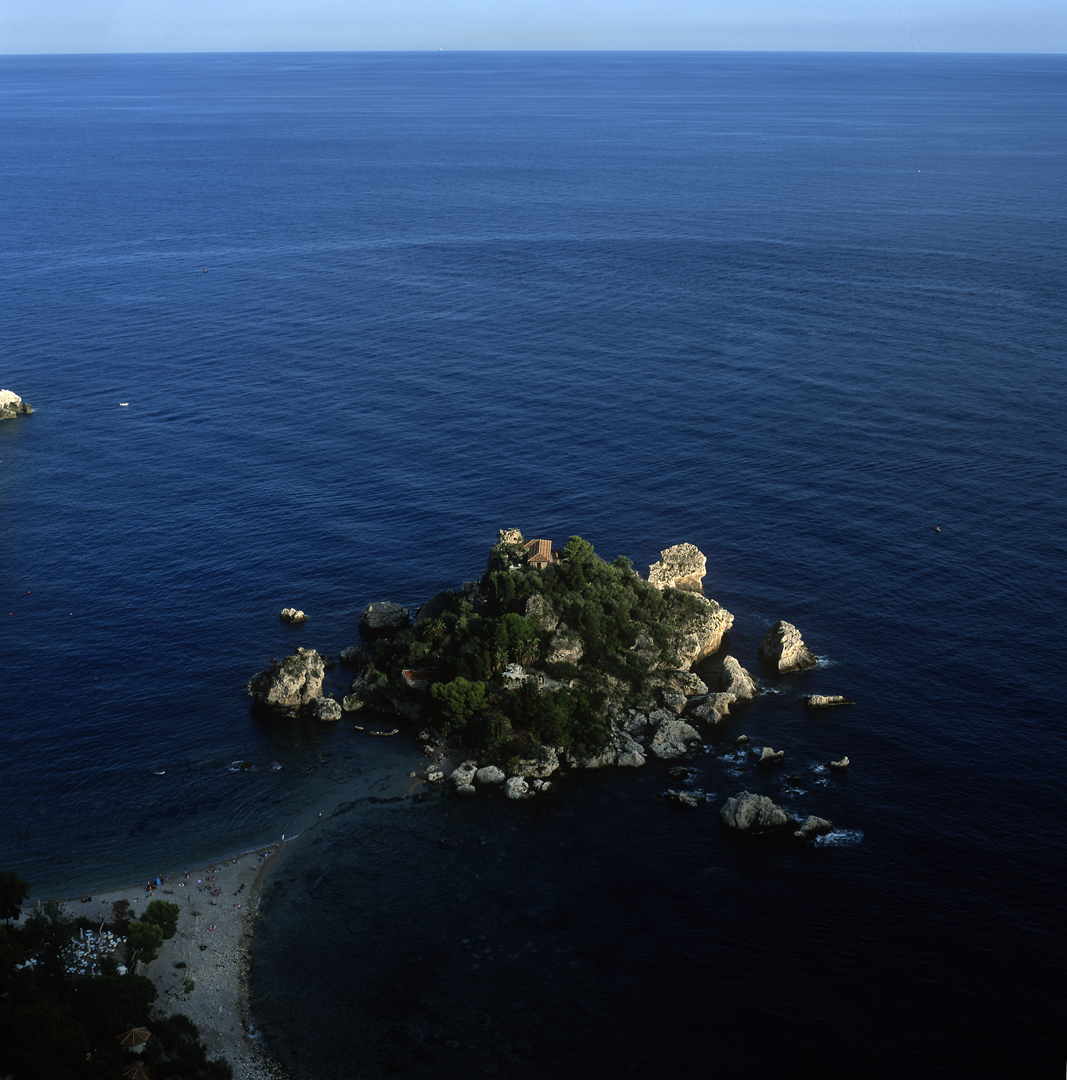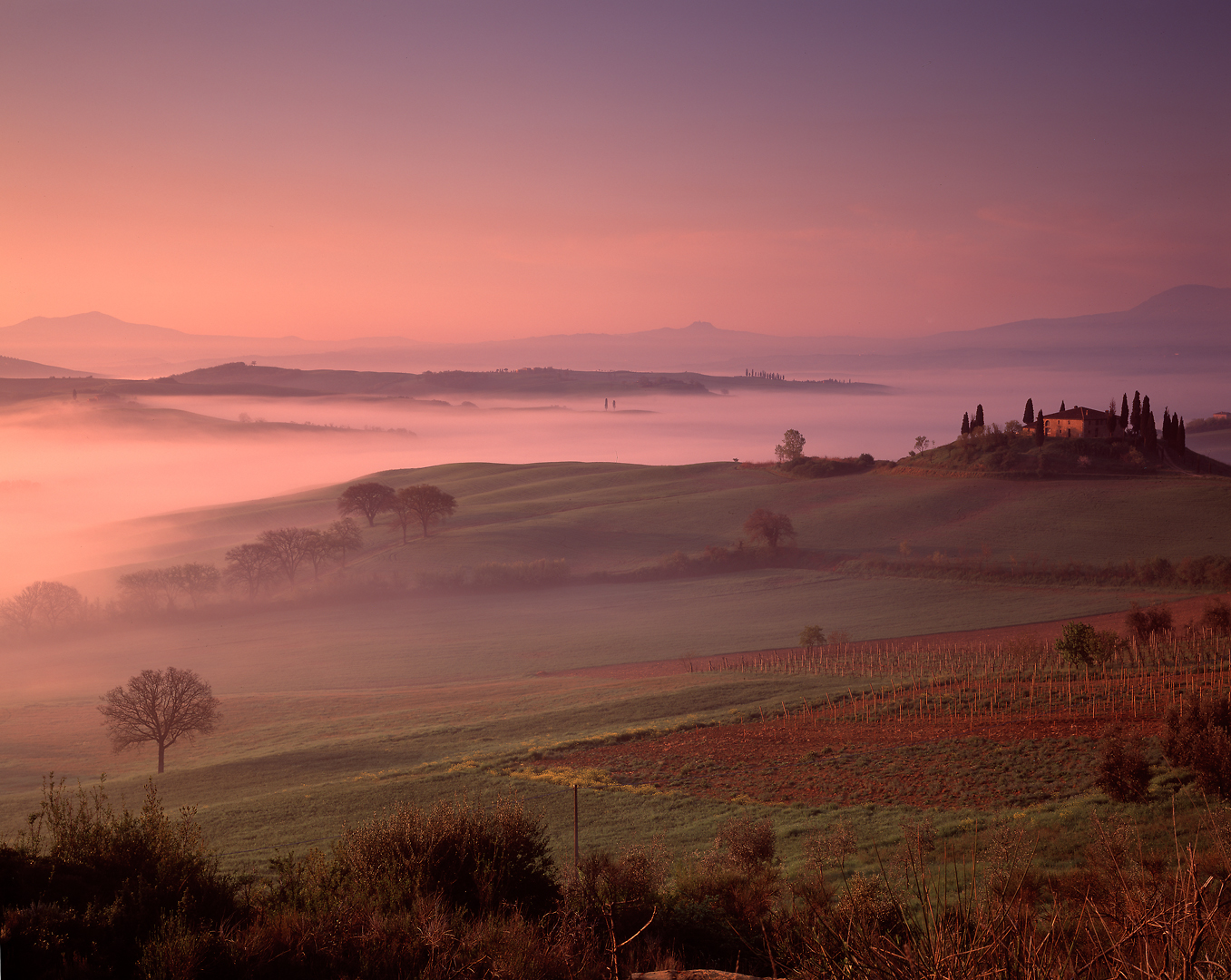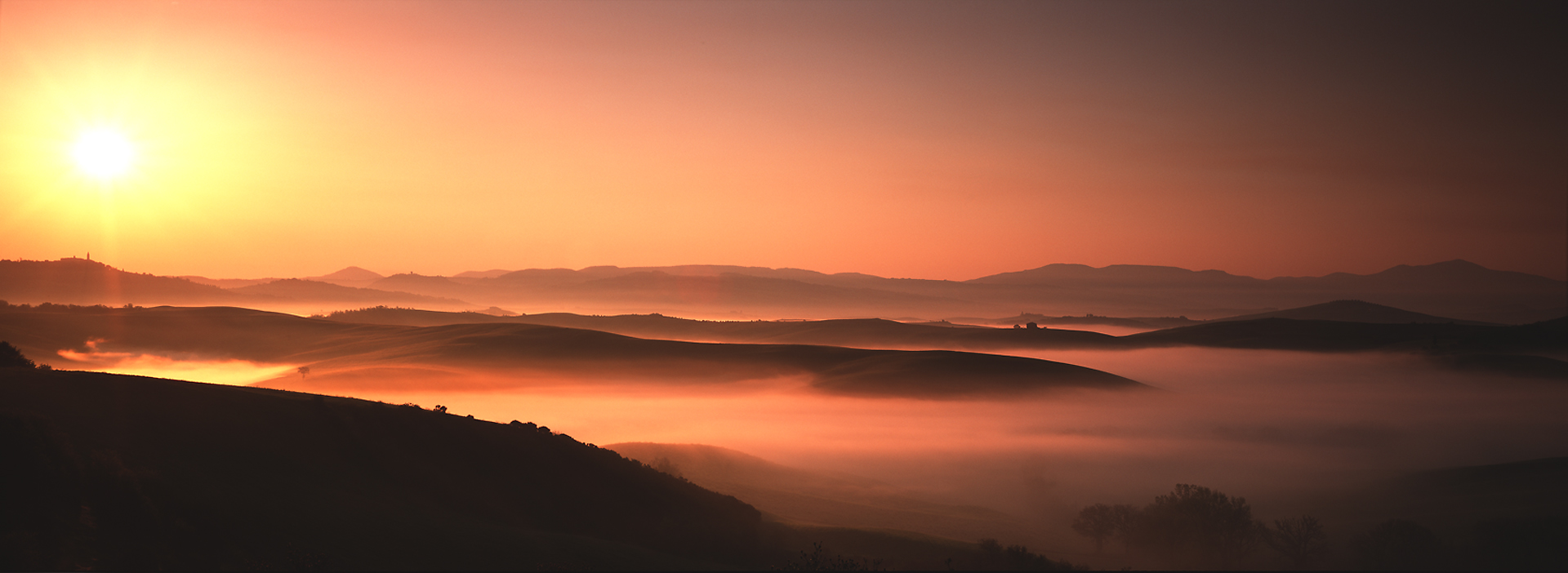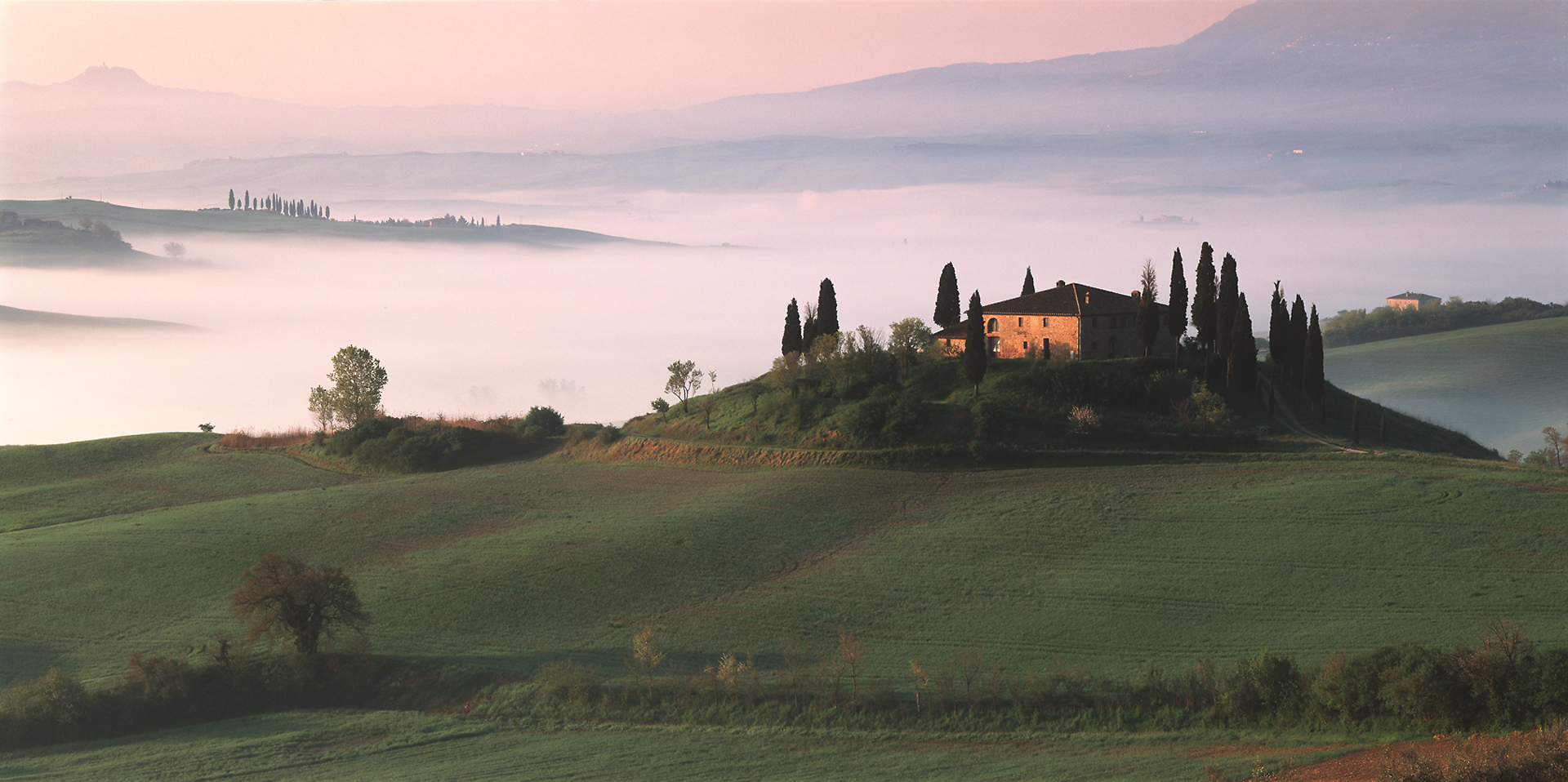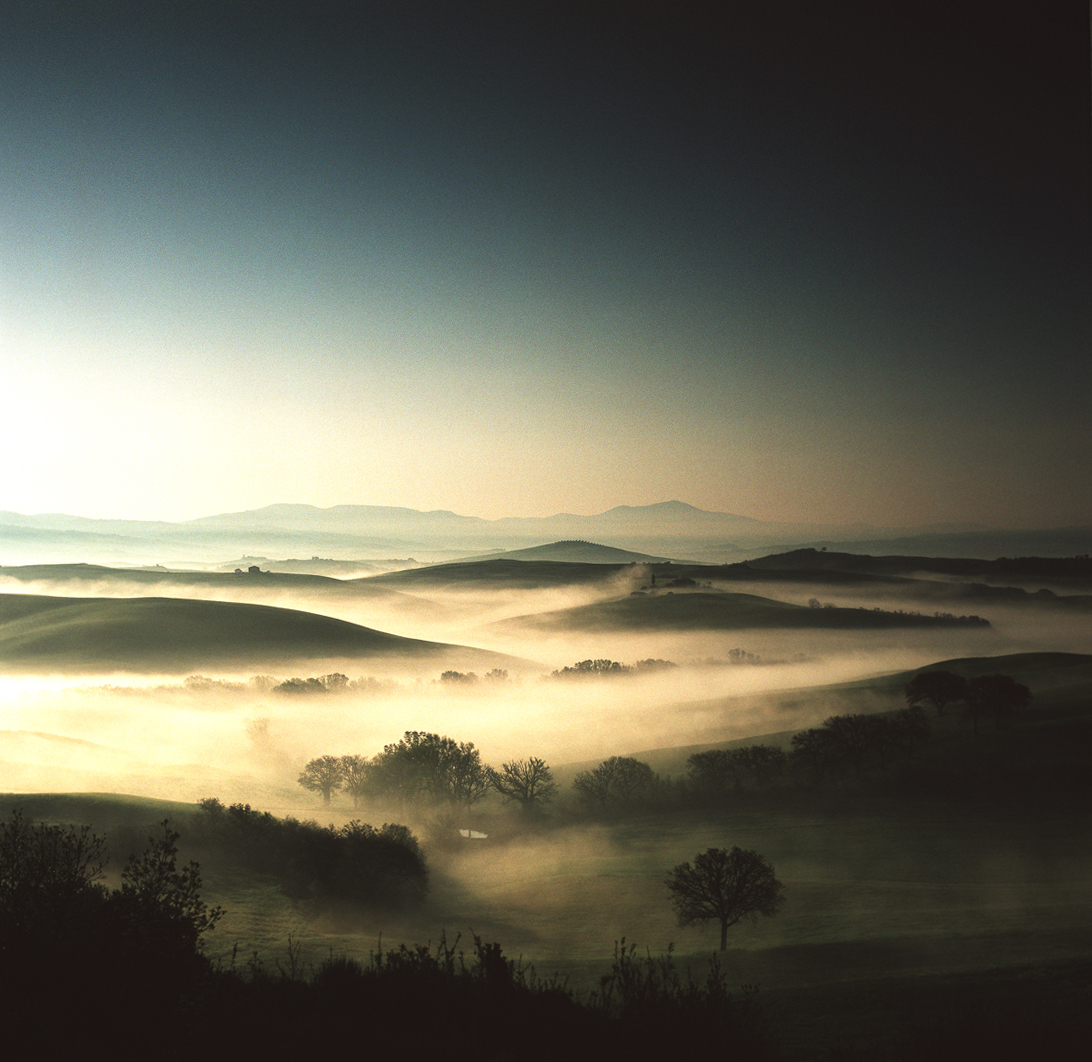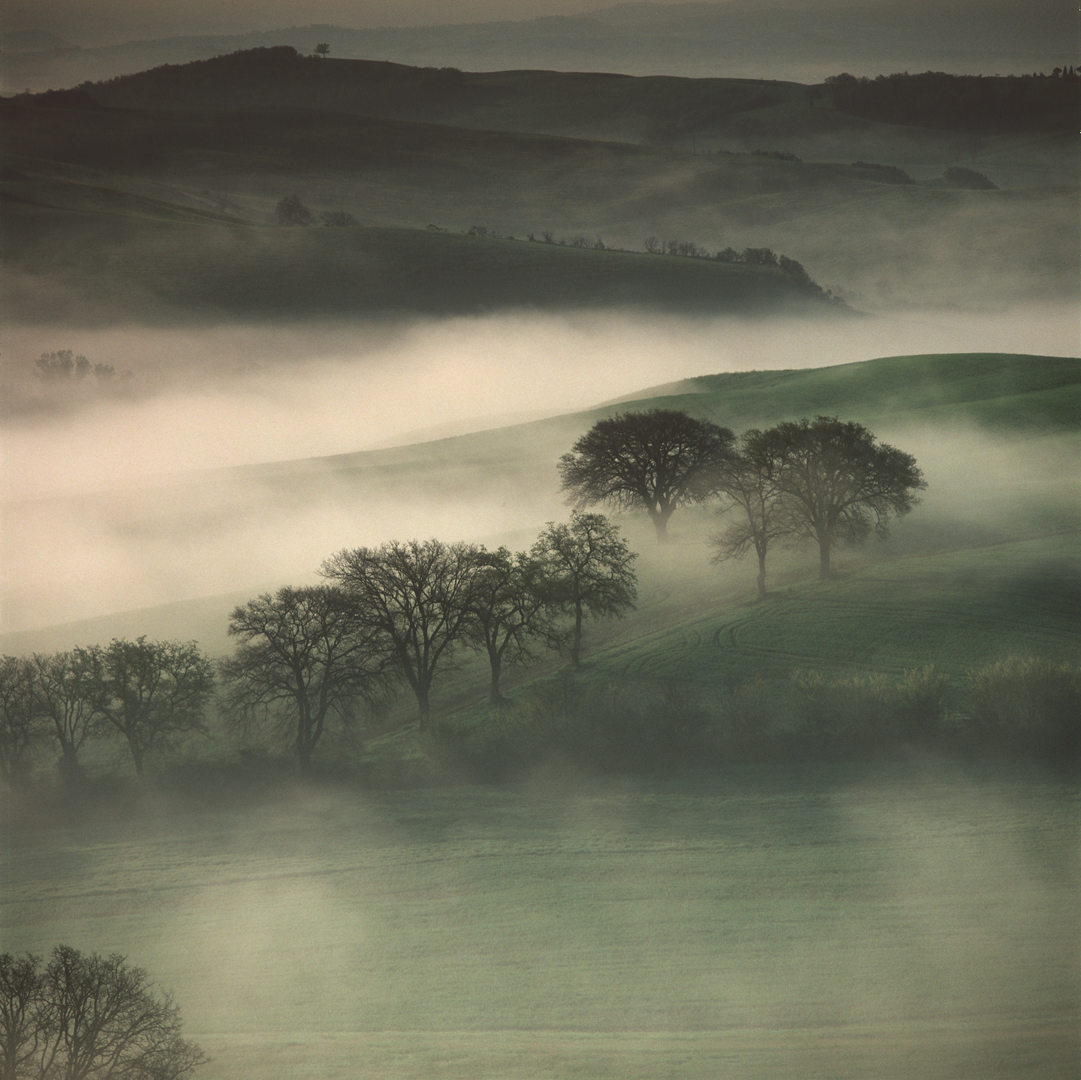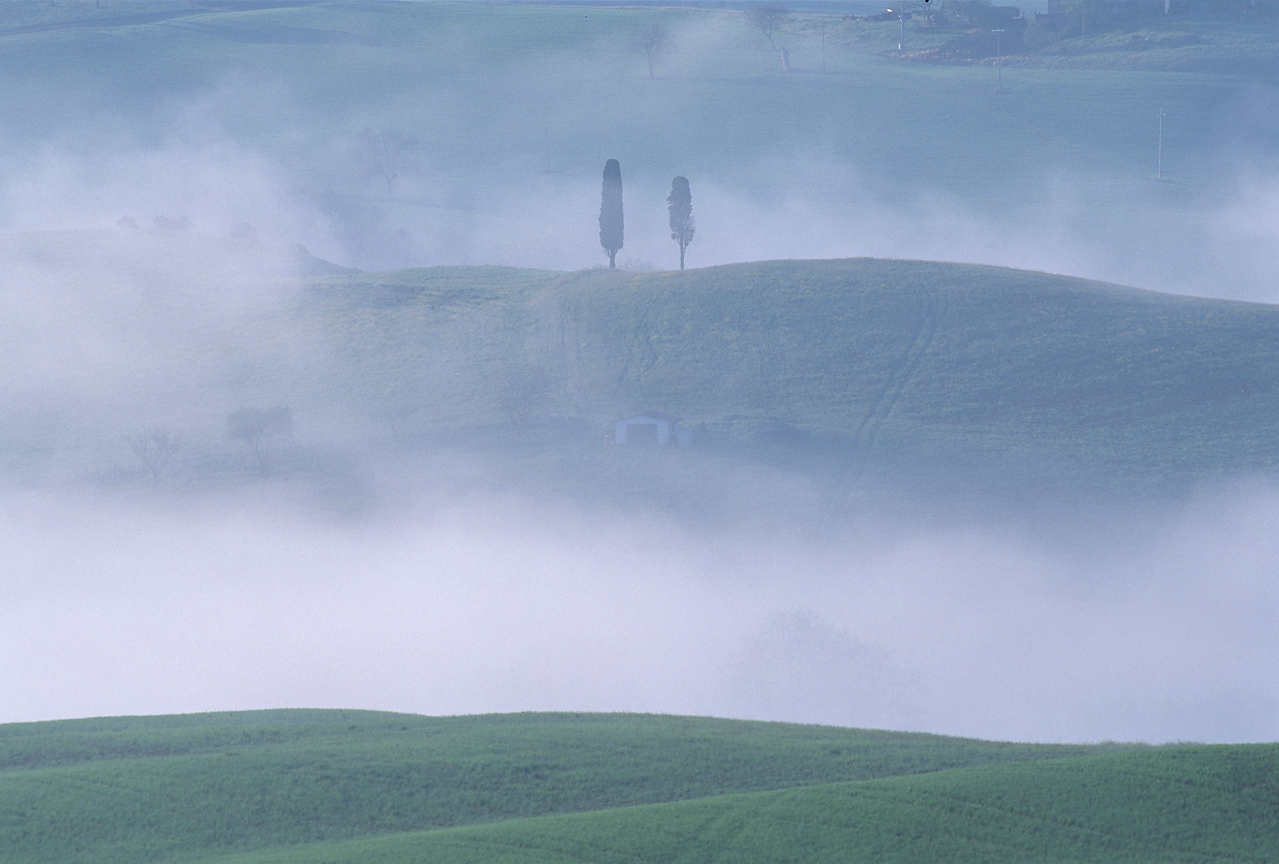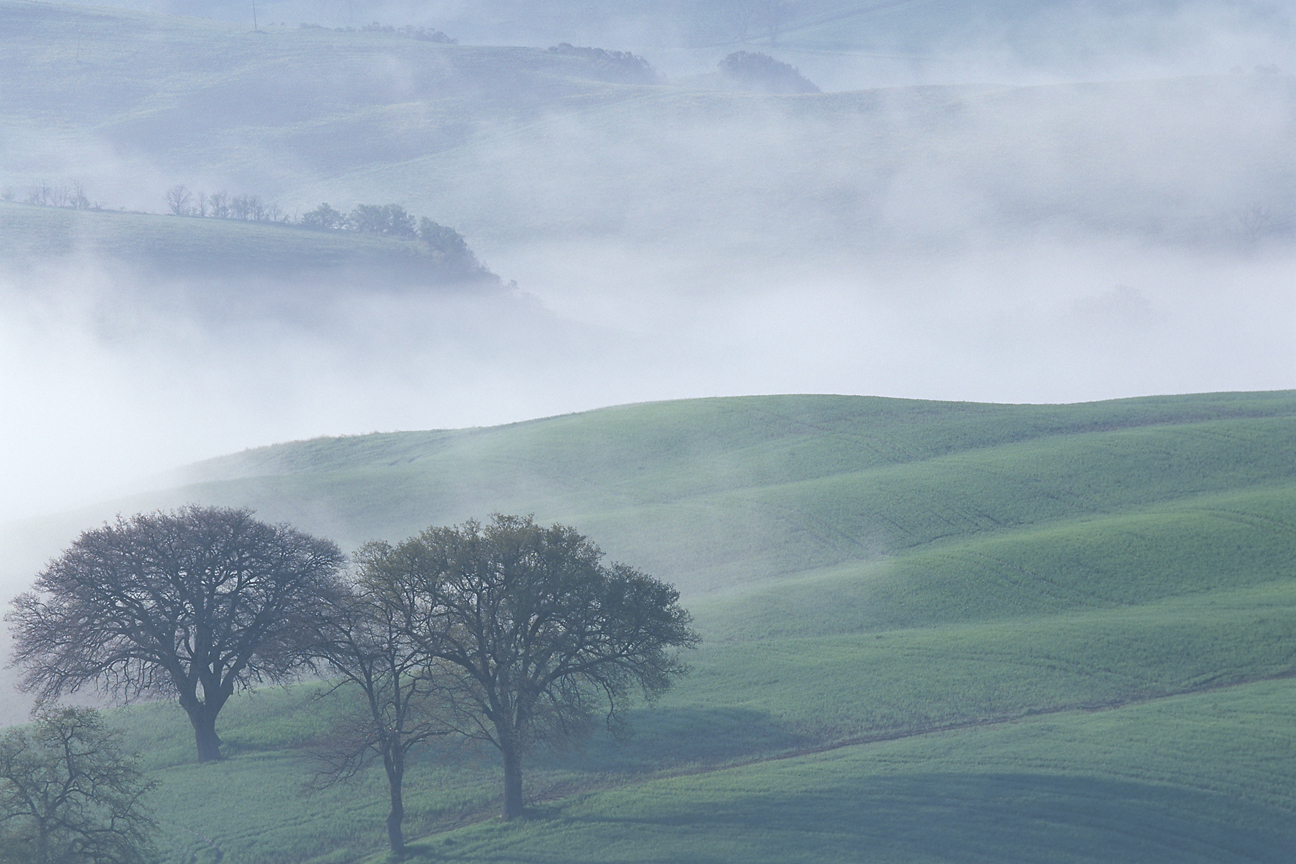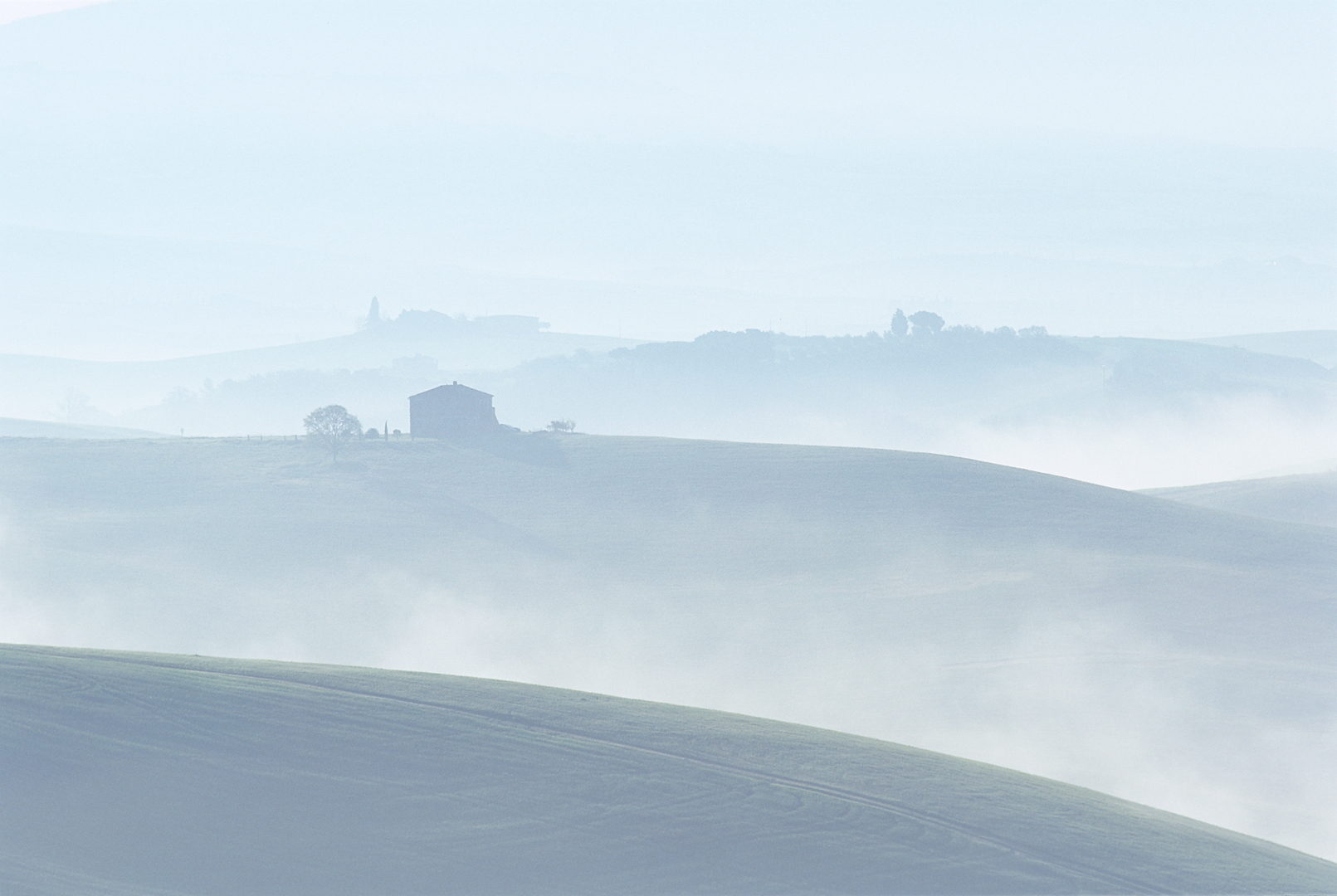The large format photographer is no stranger to the early morning alarm clock, and this is particularly the case when the subject is a city like Venice. Firstly, you need to get up early to capture the special light before, during and immediately after sunrise. Secondly, you don’t normally want a seething mass of people in your shot. And of course if there is a seething mass of people, you may be unable, or not permitted, to erect a substantial tripod with a heavy camera on it. Look at the photograph below, taken at around 6am, and imagine what it would look like at 11am when all the cruise ships and tour buses have emptied their passengers into St Mark’s Square.
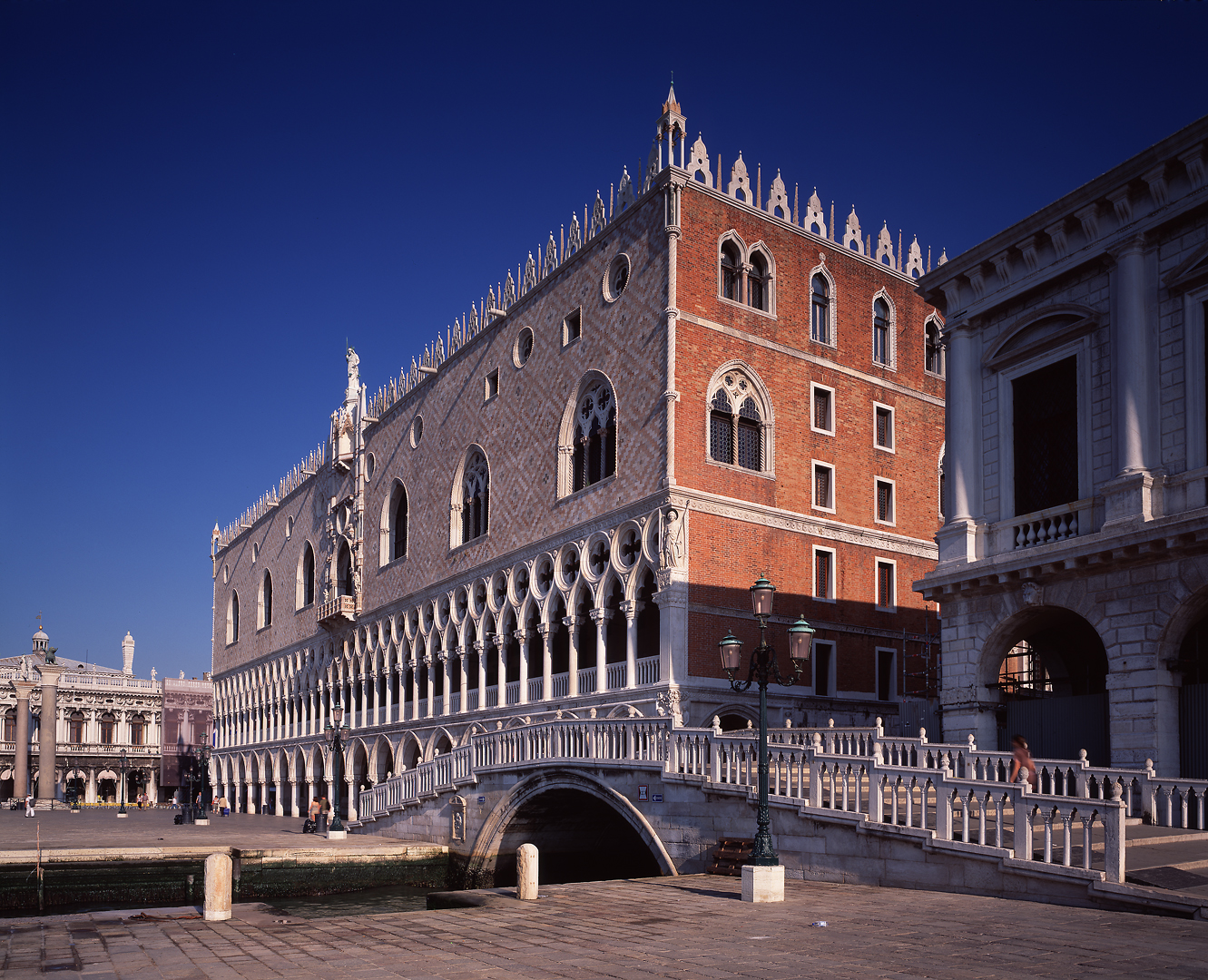
A good many Venice photographs naturally involve water, and the very early morning is a good time to find it at its most still.
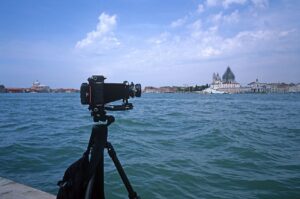
As I pointed out in my post on Urbino, early morning photography is an exercise that benefits from prior planning and reconnaissance. There is no point turning up to take a classic view, and finding that what you want is deep in shadow. This is particularly important in somewhere like Venice where you are unlikely to have too many choices of angles from which to compose your picture. So you need to work out where the sun will be coming from at the time, and on the date, you have in mind. I used to do this with paper maps, a compass, and tables of sunrise times and azimuths for the appropriate time of year. These days you can get apps that do it for you, and overlay the information on a map.

Fortunately in Venice the vaporetti start running pretty early, and even on foot you can get to places quite quickly. So for this next picture I was able to take the vaporetto across to Giudecca and be in position well before sunrise to take a photograph looking back across the Basino, with Palladio’s church of San Giorgio Maggiore silhouetted on the right and the main island in the distance. I used a neutral density graduated filter to balance the sky and the sea, and in low light conditions and using slow (ISO 50) film, I needed a long exposure which smoothed out the movements of the water. To the left, the Renaissance church on the other side of the lagoon, with the classical-style façade under an older campanile, is the Pietà, the institution for orphan girls where Vivaldi was the music master.
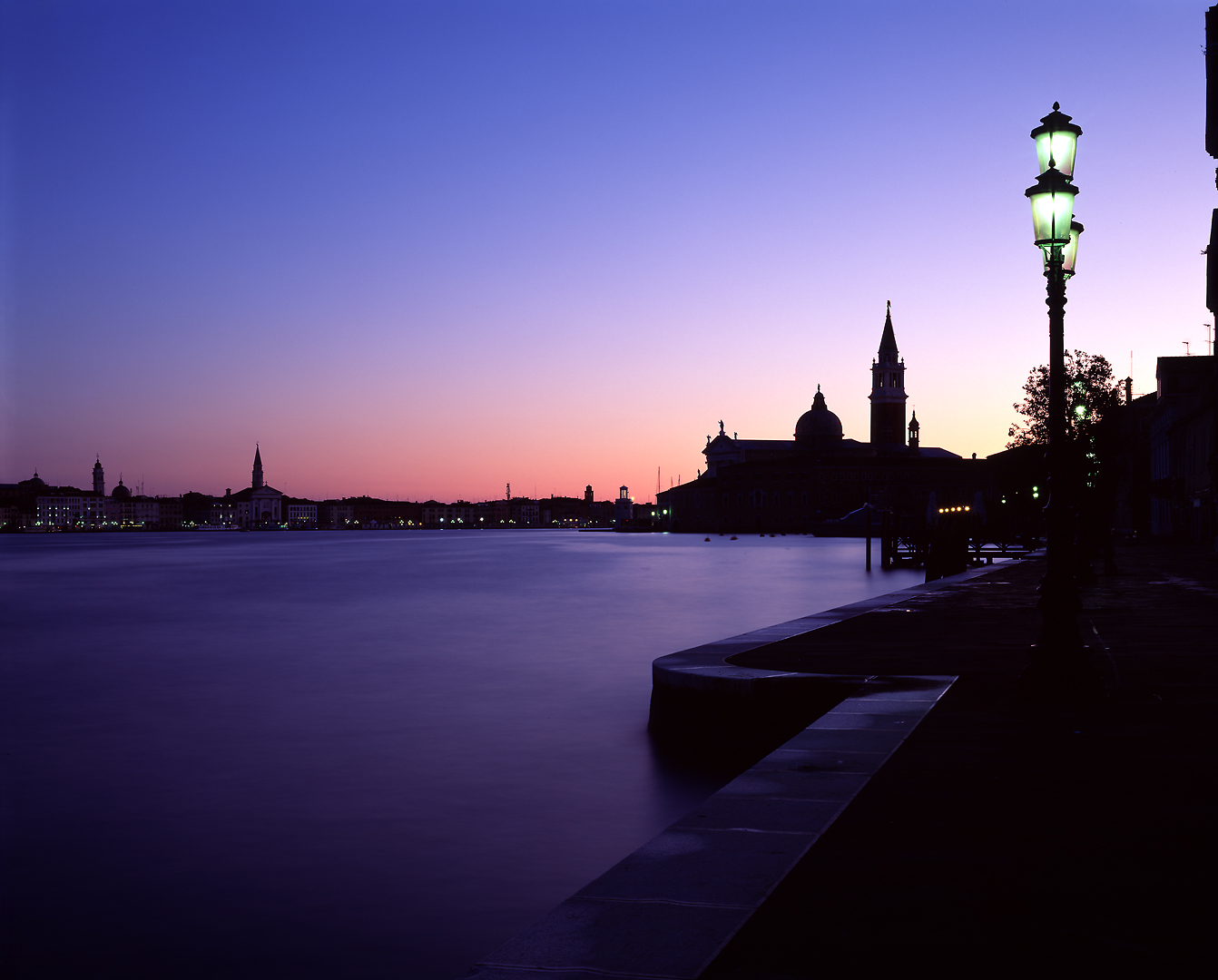
Of course in Venice, particularly in the cooler months, all your plans to catch the breathtaking dawn sunlight can be frustrated by morning fog. This need not be a disaster, as the muted light can produce low contrast and some attractive pastel colours, as in this picture of Rio Sant’Anna.
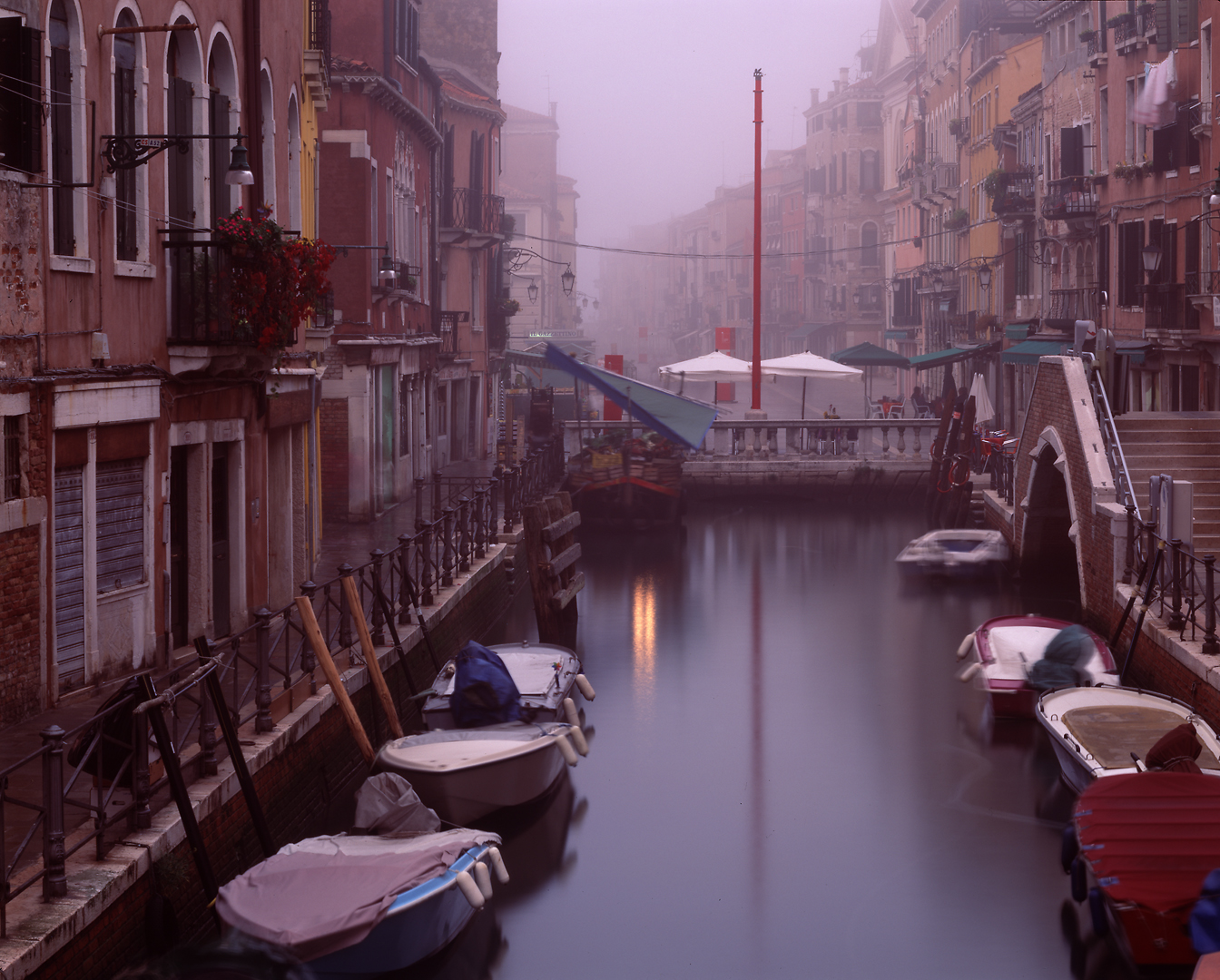
If you are still not happy that the muted colours give enough drama to your photograph, it is always worth trying converting it to black and white. I find that boosting the contrast, and sometimes the graininess, can add a bit of atmosphere.
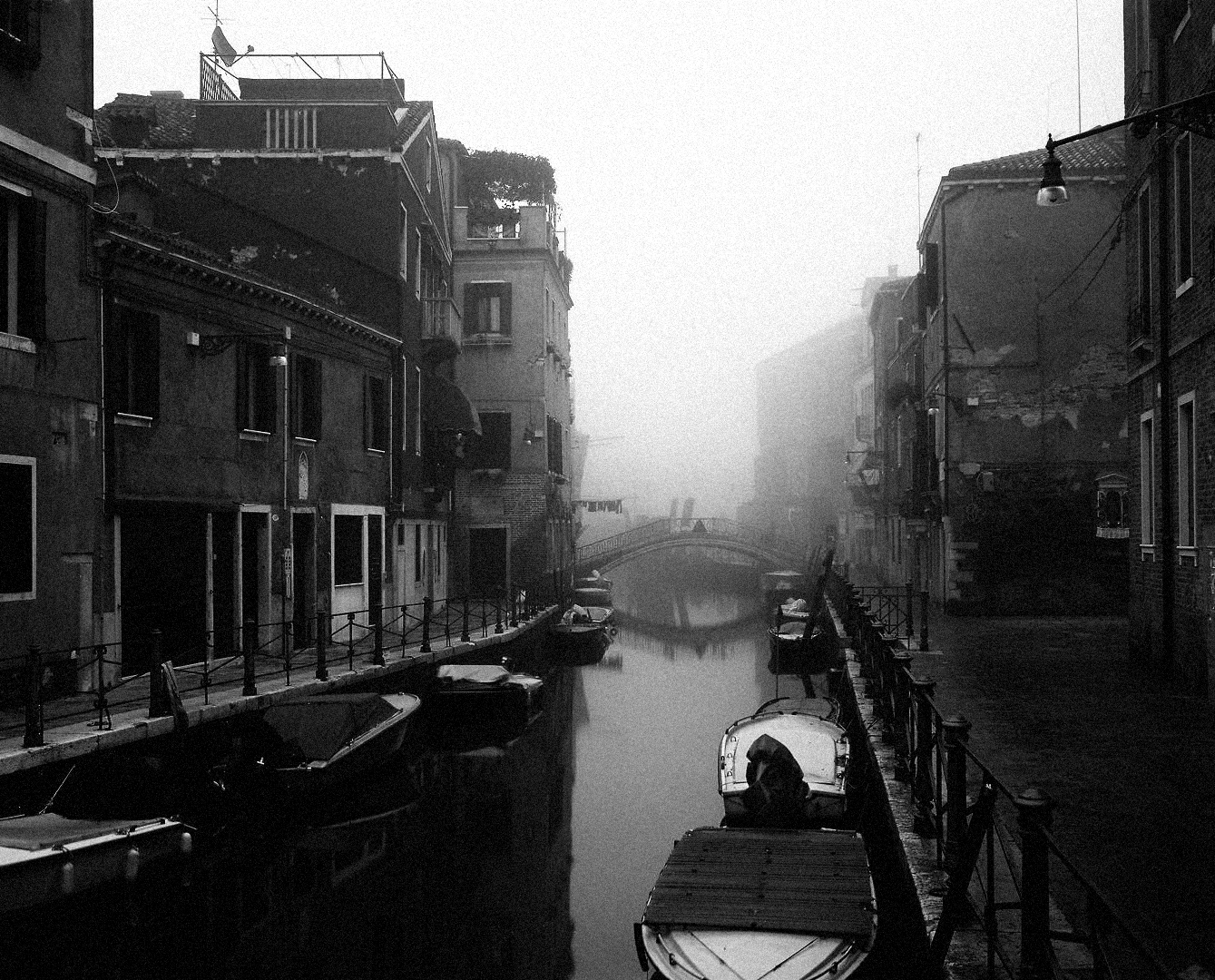
Sometimes one finds oneself choosing a spot simply for the fact that you can expect the dawn light to be particularly good there. This row of houses on the Rio San Pietro in the Castello district is a case in point. It faces east, into the rising sun, and on the other side of the canal is an open area so that the houses are fully illuminated even when the sun is still very low.
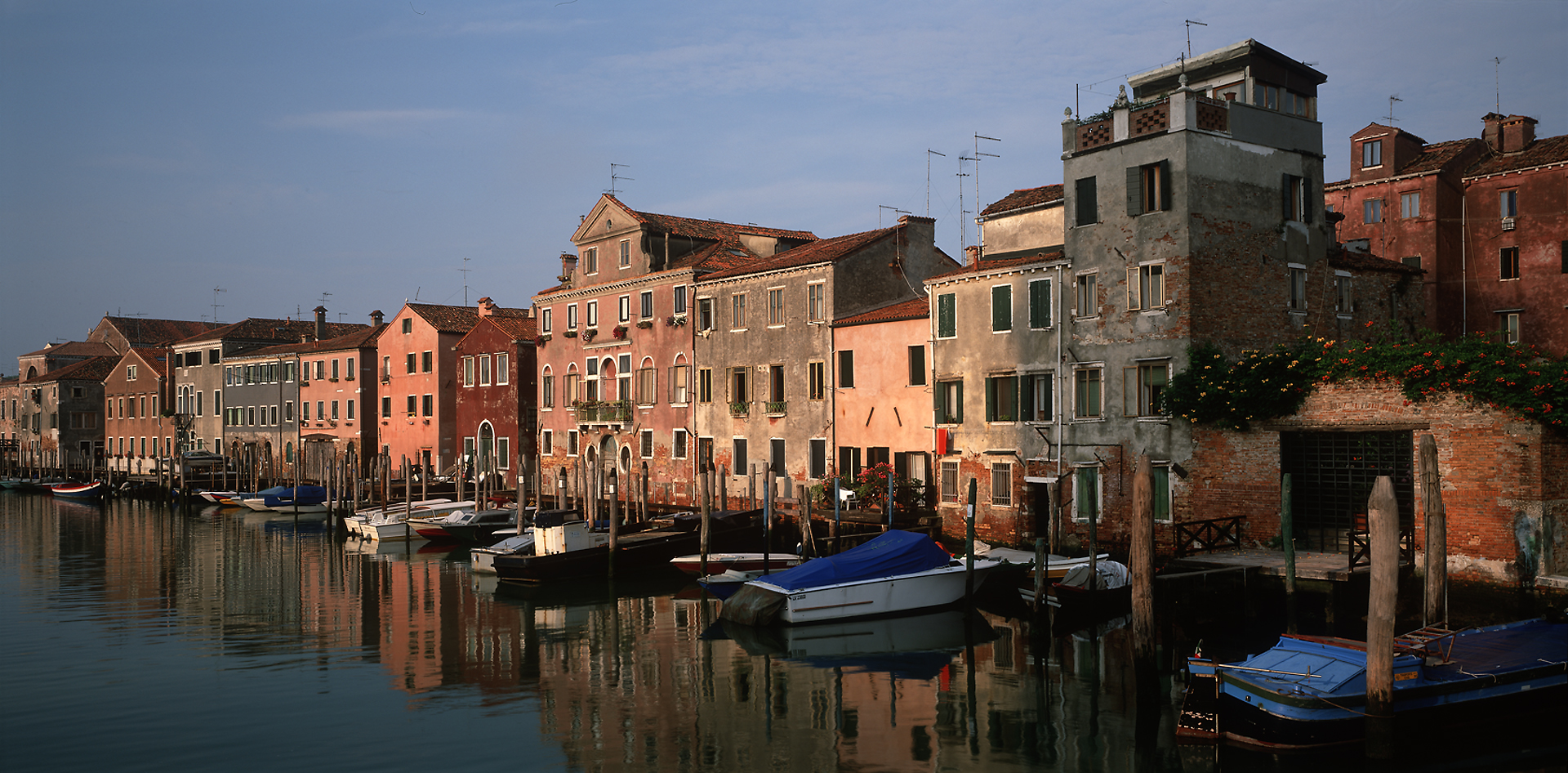
Rio Sant’Anna is a canal that once ran all the way from Rio San Pietro back down to the Basino. During the period of Napoleonic rule, the lower part of the canal was filled in to form what is now called the Via Garibaldi, and an adjacent canal was filled in to form the public gardens, a name familiar to many tourists due to the nearby “Giardini” vaporetto stop (the “Giardini Biennale” stop is a bit further down). Right at the point where the Rio Sant’Anna ends and the Via Garibaldi begins, a greengrocer’s boat is permanently moored. I determined that I would take a photograph of it in the pre-dawn light, with the tripod placed on an elevated point on a small bridge, looking back down the Via Garibaldi where, in the distance and illuminated by the dawn, you can see the church of Santa Maria della Salute at the entrance of the Grand Canal. This was a challenging photograph in several respects. Large format cameras do not generally have built-in light meters or other electronics; everything is manual. With slow (ISO 50) film, a narrow aperture to give maximum depth of focus, and very low levels of light, my hand-held light meter suggested an exposure of about 30 minutes. To that I added another 15 minutes to compensate for what is called “reciprocity failure” where the sensitivity of film decreases with extended exposure times. However I then had to take into account the fact that while the exposure was happening, everything would be getting brighter as sunrise approached. So to accommodate that I mentally subtracted 10 minutes again. Not an exact science.
About halfway through the exposure, the damn greengrocer had the nerve to climb onto his boat to rearrange some fruit. This set the boat rocking and ripples going on the canal. As soon as I realised what was happening I closed the shutter and paused the timer on my watch. That avoided some of the worst effects, but the mirror-stillness of the water was lost, and the front of the greengrocer’s boat is a bit blurred from movement. The boat in the foreground became very blurred, but I didn’t really mind that as it wasn’t a key element of the composition. The greengrocer got back on dry land, and eventually the movement of the boat subsided to the point where I felt I could reopen the shutter and restart the timer. The total time to take the photograph ended up being around 50 minutes, and in addition to the increasing light, more and more early risers were appearing in Via Garibaldi on their way to work. This didn’t affect the photograph too badly, as due to the very long exposure they tended not to register on the image. A few people paused to chat long enough to show up as “ghosts”, which you can see if you zoom in on the photograph. (This by the way, is why many early 19th-Century photographs show apparently deserted scenes. It wasn’t that there was nobody there, but that people didn’t stay still long enough to be captured on the very slow photographic emulsions of the day.)
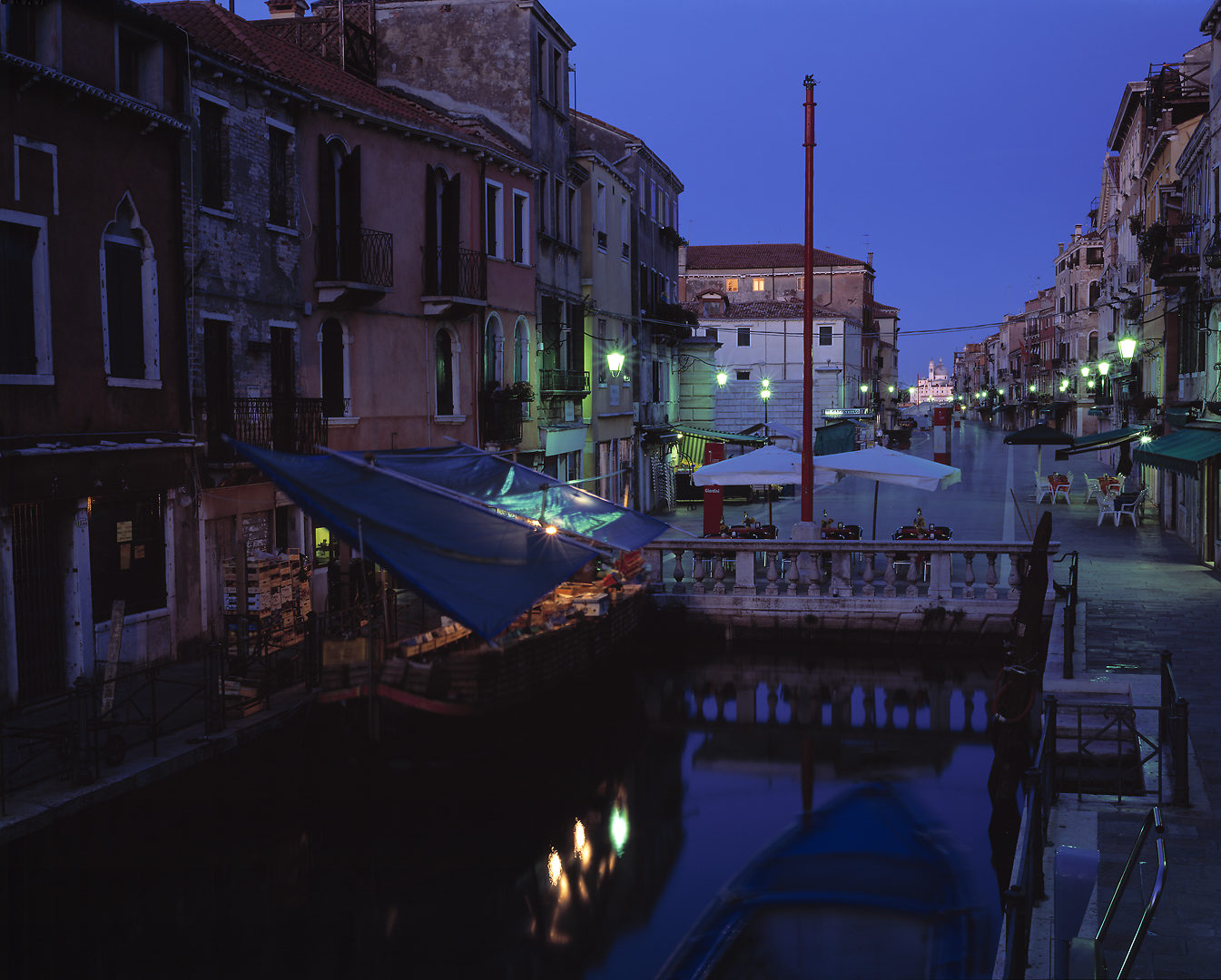
I was pretty chilly when I finally finished, but fortunately there is a bakery just on the right in the photograph, where I was able to buy some warm fresh pastries before heading back to our accommodation.
I will finish with three iconic views of the Basilica of Santa Maria della Salute (Our Lady of Health). This was a relatively late addition to the Venice skyline, being commissioned in 1631 as an act of public thanksgiving for the end of a particularly deadly outbreak of the plague. The first photograph was taken at water level, at the end of one of the little lanes that run down to the Grand Canal. It was on a cloudy morning when, during the brief moments when the sun broke through, the clouds turned red. The second was taken from the Accademia Bridge (again, I had to interrupt the exposure a few times, this time when joggers came bouncing over the bridge behind me, shaking the tripod). You can tell that the second picture was taken in high summer, because the sun is further north (and out of the picture on the left, illuminating the houses on the right of the Grand Canal). In the first photograph, taken in autumn, the sun is further south and rising behind the church, making the buildings into silhouettes.
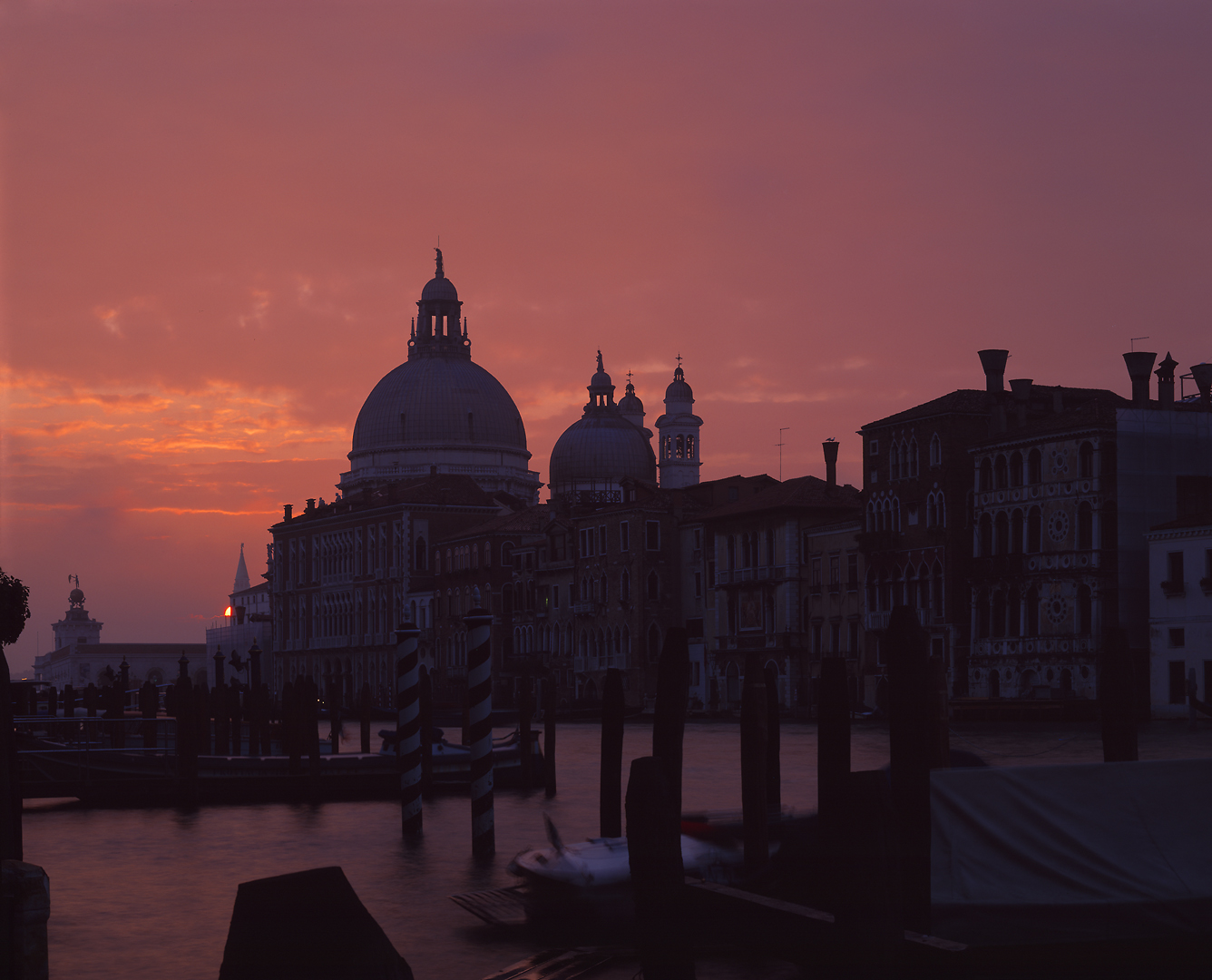
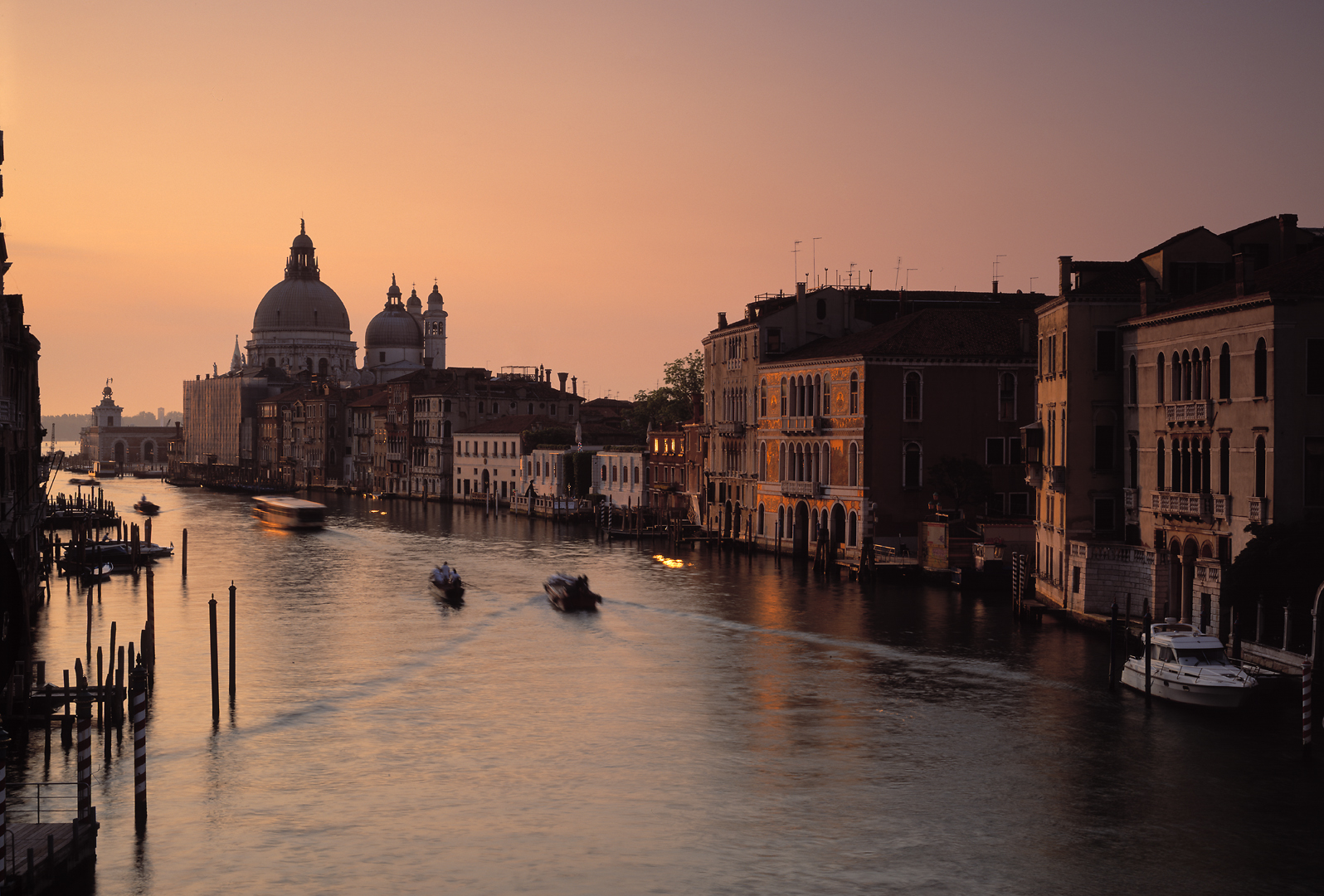
The third picture of Santa Maria della Salute is from near the San Marco (Giardinetti) vaporetto stop, with the morning light illuminating the front of the building, this time in spring.
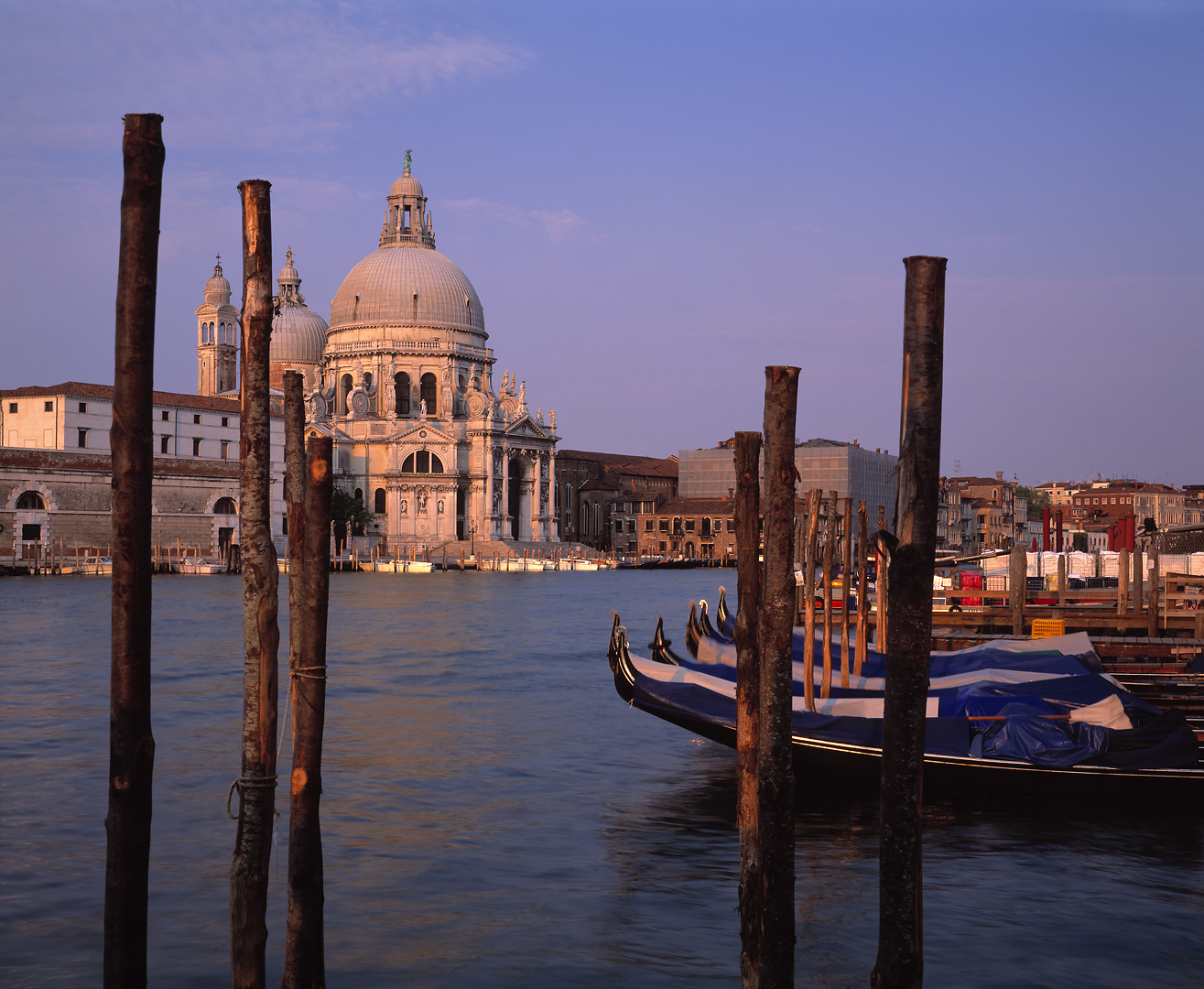
Evening is another special time for photography. I will do another post of evening photographs in due course.
Edit: here it is.

